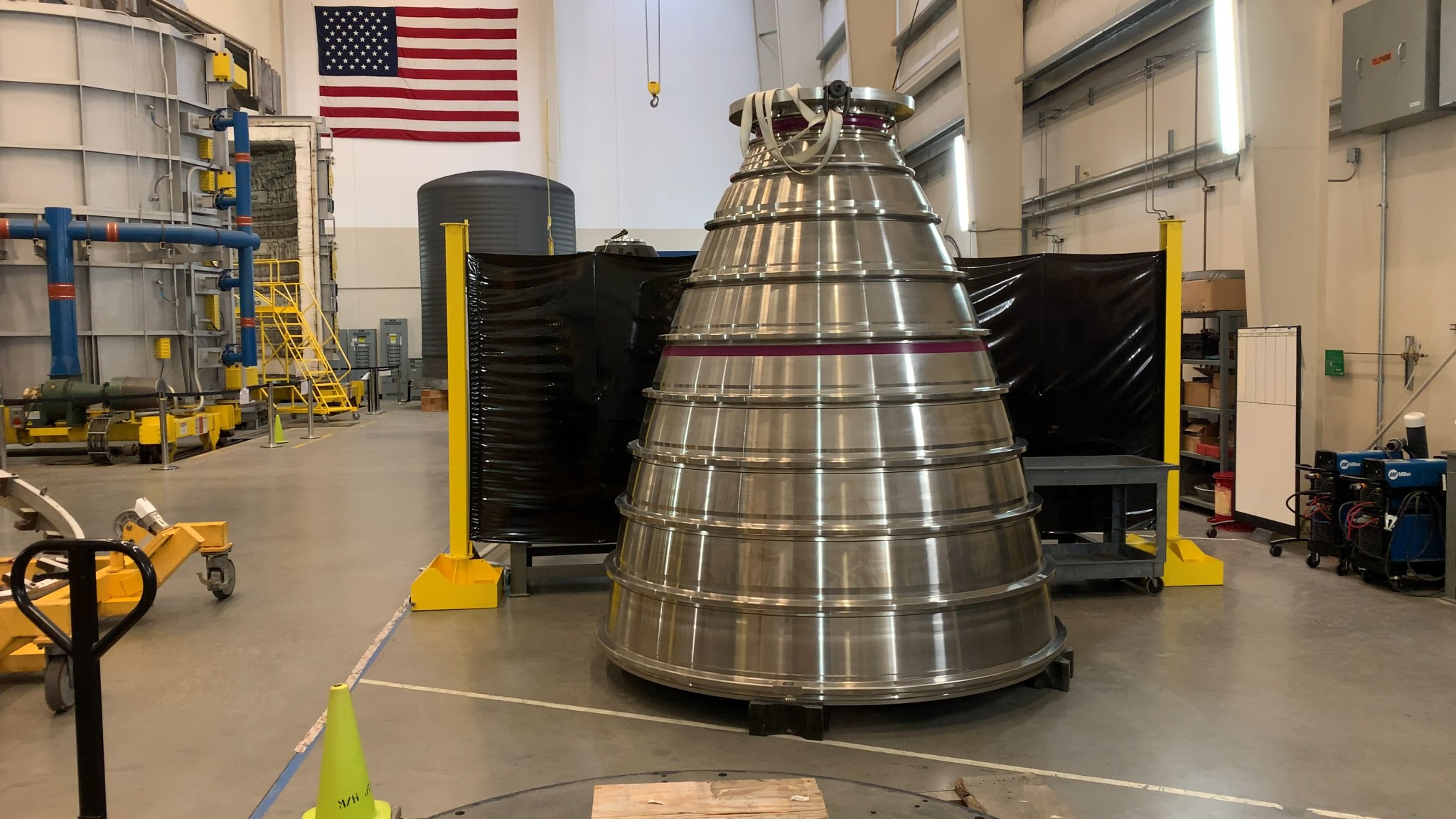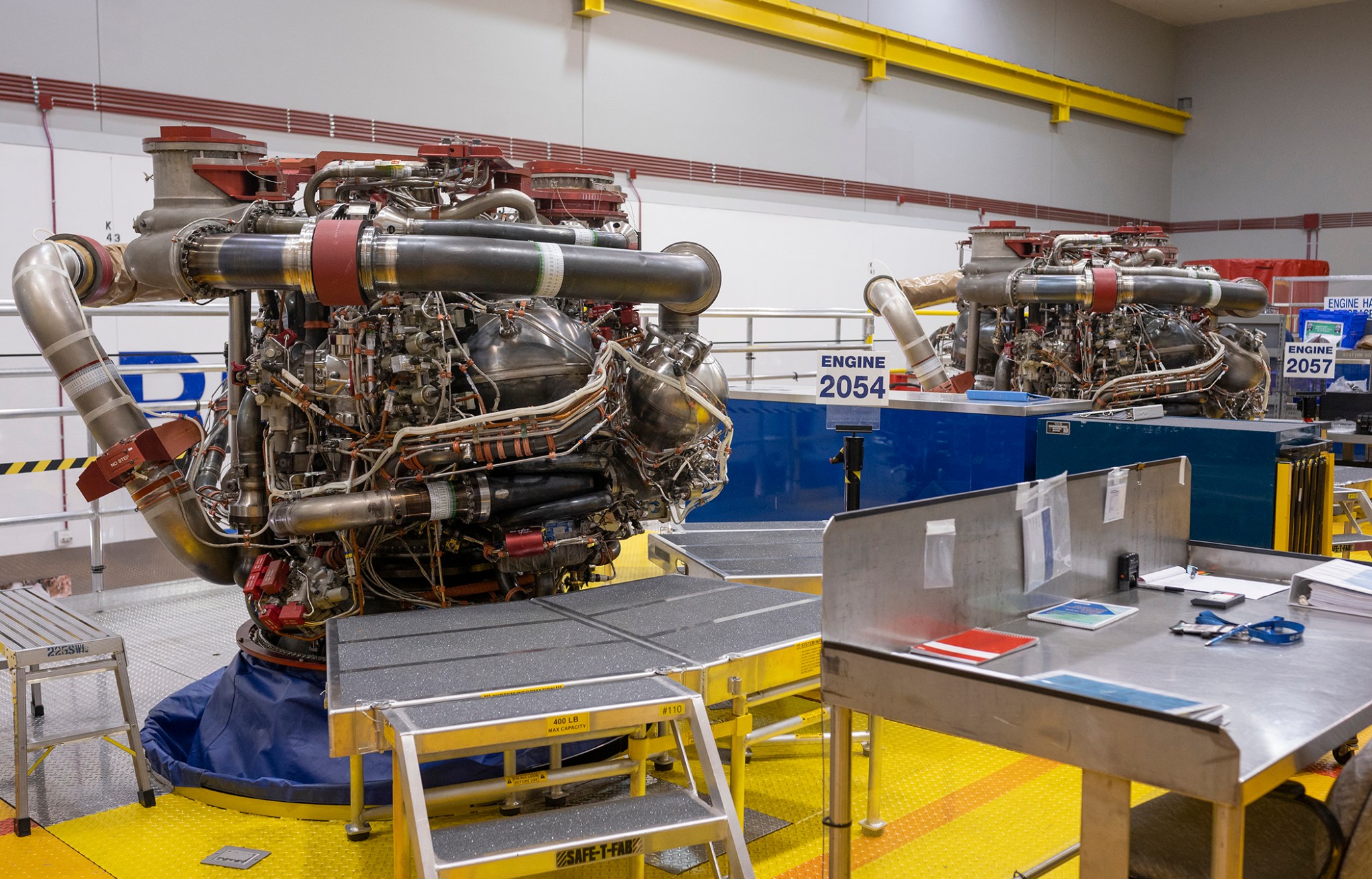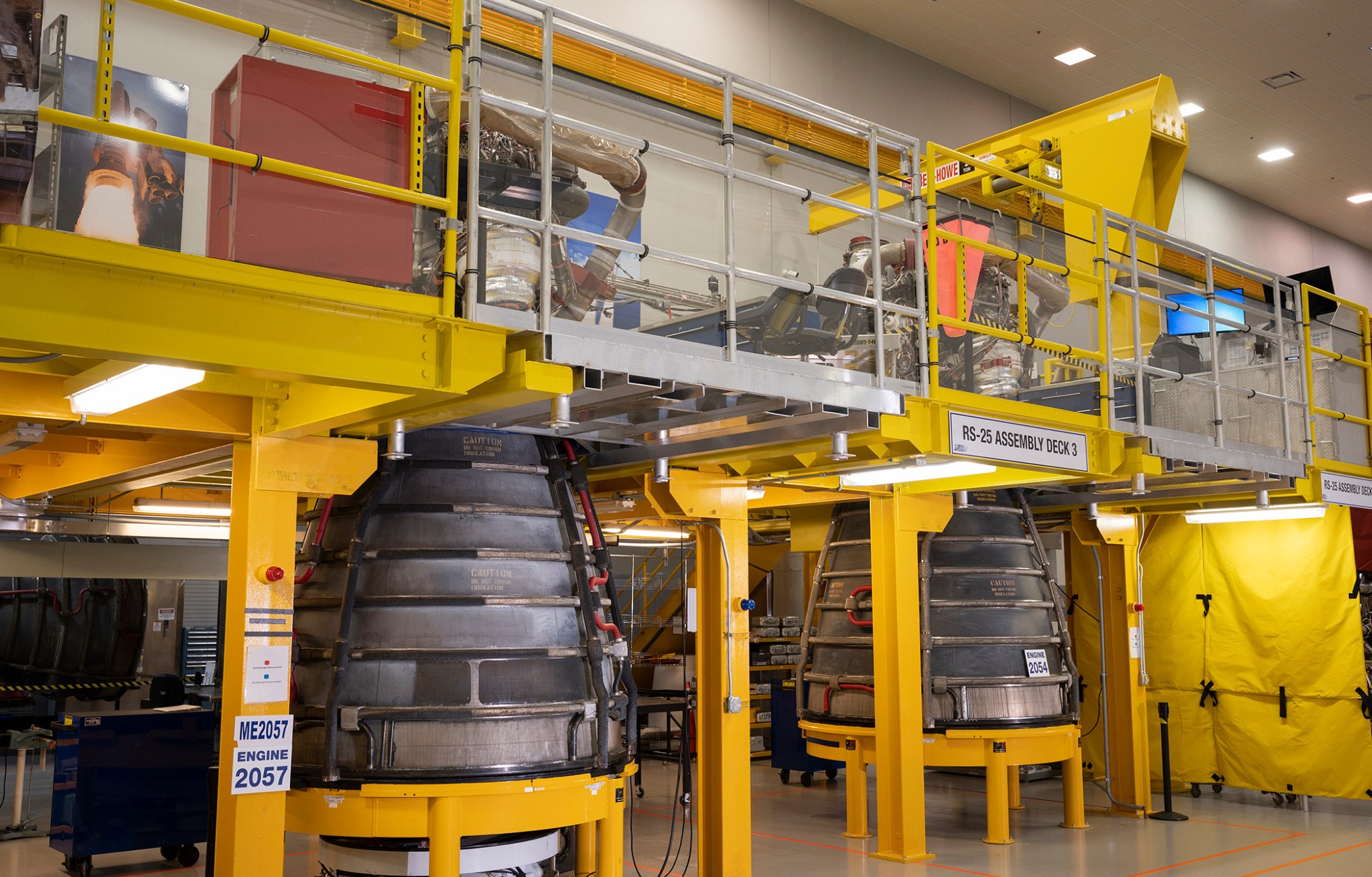The rocket engine with one of the most storied histories in spaceflight, the RS-25, is returning to space for a second act – this time to send humans on the Artemis missions to explore the Moon.
As the space shuttle main engine, the RS-25 has a proven record of launching 135 missions spanning over three decades. At the end of the shuttle program in 2011, 16 RS-25 engines that helped build NASA’s International Space Station and deploy the Hubble Space Telescope, among other achievements, were stored away.
When NASA began scouting engines to power America’s next super heavy-lift rocket, the Space Launch System (SLS), the RS-25 offered an opportunity to forgo costs of developing a new engine, and the ability to leverage the assets, capabilities, and experience of the Space Shuttle Program.

“It is one of the most reliable, efficient, high-performance engines ever built and was way ahead of its time when considering design, engineering and performance,” said Johnny Heflin, manager of the SLS Liquid Engines Office at NASA’s Marshall Space Flight Center in Huntsville, Alabama. “The fact that this engine has the versatility to launch the SLS is a testament to the professionals who first built it back in the 70s, as well as the incredible people that have continually improved it along its 30-plus year history.”
However, getting the engine to fly the new mega rocket was not a matter of “plug and play.” Engineers made several design improvements to ready the RS-25 for flight in the more demanding SLS environment.

Engineers Adapt the RS-25 for the SLS Rocket
In 2015, when NASA and Aerojet Rocketdyne began adapting the heritage engines, one of the first parts they redesigned was the obsolete flight controllers. Often referred to as the brain of the engine, because of its role to actively control engine operation and manage command and data protocols between the engine and spacecraft, the RS-25 needed a supercomputer capable of handling the modern SLS algorithms.
Just changing the engine’s control systems wasn’t enough to prepare this engine to operate the most powerful rocket ever built. The SLS architecture was different from that of its shuttle predecessor, and engineers adapted the RS-25 engine for its new role.
The space shuttle afforded three RS-25s the comfort of riding farther away from the main solid rocket booster during flight, which created less extreme thermal conditions. With the SLS design, four engines sit at the base of the rocket’s core stage, directly next to the two solid rocket boosters. In this scenario, the RS-25 engine nozzles take on extreme base heating, especially during the first two minutes of flight when the booster fuel is burned.
“Those engine nozzles are getting blasted by the extreme heat exiting the two solid rocket boosters,” said Philip Benefield, team lead for engines systems and requirements. “It’s as if the engines are flying next to two giant heat lamps during its ascent.”
The engine nozzles absorb additional heat during booster separation because of the thrusters firing upon it to detach the booster from the SLS core stage. This was addressed by adding insulation to the engine nozzle, which Benefield described as one of the key improvements.

Another difference is a result of where the liquid oxygen tank sits in relation to the four RS-25 engines at the base of the rocket’s core stage. As the upper-most tank of the 212-foot-core stage, this tall column of dense liquid oxygen propellant results in high pressure at the RS-25 inlets.
“These inlets experience double the pressure of that of the shuttle configuration,” noted Benefield. “We had to assess whether or not these parts could handle that kind of load, then certify them to operational safety standards. With minimal upgrades, the engine met certification requirements. It truly demonstrates the engine’s advanced design and reliability.”
As of April 2019, acceptance testing of all 16 former space shuttle main engines was complete. With enough engines to cover the first four Artemis missions, the newly revived RS-25 can operate at 109% of its operational thrust level, a 5% gain from the end of the shuttle program.
The RS-25 Sees a Bright Future
By the end of the Space Shuttle Program, Aerojet Rocketdyne was no longer producing engines.
In 2015, NASA funded Aerojet Rocketdyne to restart the production of six new engines and then modified the agreement by adding 18 additional engines to the order. The newer RS-25s produce 111% operational thrust levels and incorporate advanced manufacturing methods, such as 3-D Printing, hot isostatic pressure bonding, five-axis milling machines and digital X-rays, reducing the cost to build the new engines by 30% from the original shuttle engines.
“It wasn’t just a matter of making the RS-25 more powerful, we weren’t trying to take something amazing and make it more amazing. We wanted to attain the same remarkable aspects while making it significantly less costly to build,” commented Heflin.
Adding to manufacturing improvements, Aerojet Rocketdyne recently redesigned the engine nozzle jacket that will be assembled from four large metal cones, as opposed to the previous design that came in 37 separate pieces.
“That single manufacturing change reduces nozzle cost by over 20%. So, we are laying the foundation for the future by reducing manufacturing costs and building the same high-performance engine in less time,” Heflin concluded.
During a recent Green Run test at NASA’s Stennis Space Center near Bay St. Louis, Mississippi, all four RS-25 engines of the Artemis I core stage completed a full-duration 8 minute hot fire and produced 1.6 million pounds of thrust, as they will to launch the Artemis I mission. The next time the four engines fire will be during the rocket’s debut flight to the Moon.
The Artemis program is the next step in human space exploration and the major component of NASA’s broader Moon to Mars exploration approach, which will establish sustainable exploration of the Moon and prepare for humanity’s next giant leap: sending astronauts to Mars.
For more on NASA’s SLS, visit:

























